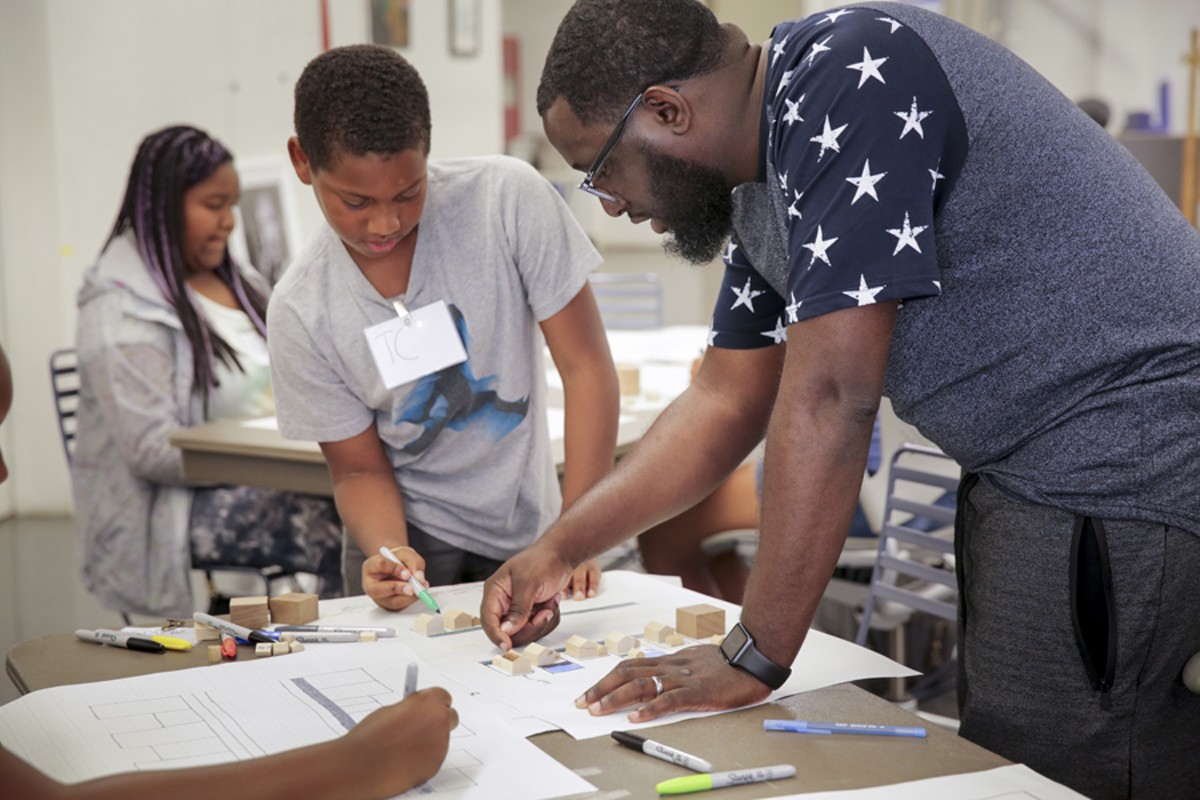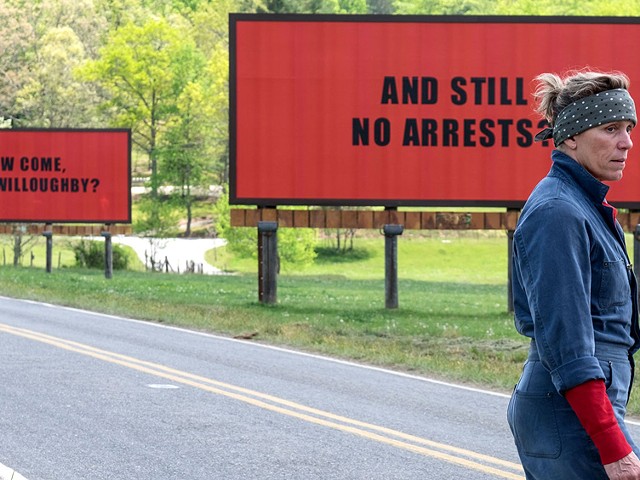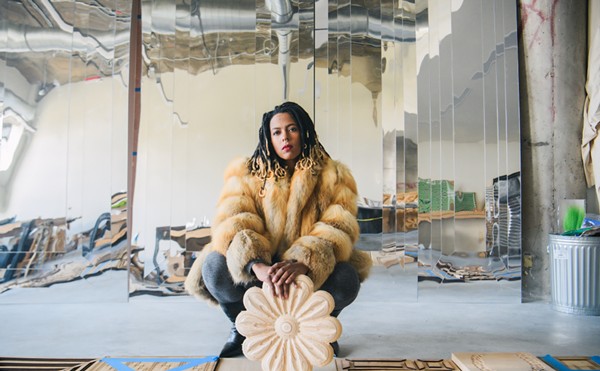Highland Park native Michael Ford has made a career out of his two seemingly unconnected passions: hip-hop and architecture. But listen to him talk and the two are obviously intertwined — it was the Swiss-French architect Le Corbusier's invention of the idea of modern housing projects that gave rise to 1520 Sedgwick Ave. in the Bronx, and 1520 Sedgwick Ave. gave rise to hip-hop.
After giving a traveling lecture series and exhibition series on the interconnectedness of hip-hop and architecture, Ford will soon bring his latest project to Detroit. Hip Hop Architecture Camp is a weekly, month-long meetup open for free to middle school students designed "to introduce underrepresented youth to architecture, urban planning, creative place making, and economic development through the lens of hip-hop culture," and after the camp MOCAD will show an exhibition of work created by the students. We spoke with Ford to learn more.
Metro Times: What are the origins of Hip Hop Architecture Camp?
Michael Ford: We started the camp last year. The first camp that we put on was a collaboration in Madison, Wisconsin, with the city of Madison's planning department and Madison Public Library. After that we took it national, and we did camps in various cities across the country including one at my alma mater in Detroit, University of Detroit Mercy. This is the first camp at MOCAD. Not only that, it's the first camp for us in 2018.
MT: Why Madison?
Ford: I'm originally from Detroit — I'm from Detroit through and through. I went to Cass Tech, and then University of Detroit Mercy. Now I'm based in Madison, I've been here for the past seven years. The reason why I started the camp here was I went to a planning meeting where the mayor's office and the city planning department were looking at what Madison would like 20 years from now. They were updating the city's comprehensive plan. At those planning meetings, as you can probably imagine, there's not a lot of diversity at those meetings. That's where the idea kind of peaked for me. How can I get young people — especially young people — to imagine the city 20 years from now? If we're talking about 20 years from now, it shouldn't be filled with people that are ages 40 and up. We should try and get some young teenagers who will be in their prime 20 years from now. So that was the pitch I made to the mayor's office and to the city planning department. And it happened: They funded it and supported it. So that's what kicked it off.
MT: What was that first camp like?
Ford: We based the camp on this initiative, called Imagine Madison, which was the name of the community engagement sessions that the planning department had to get feedback on the direction of the city for the next 20 years. So this was a special session that ran. It was every Saturday of the month in February 2017. Most of the engagement sessions the city was doing was with adults. So I did that same engagement session, but I just put hip-hop over the top of it. So the themes were based on the topics of transportation, access to waterfronts, etc., and I used lyrics to help kids come up with those conversations.
MT: How will the Detroit event compare?
Ford: The one in Detroit is going to be very similar. We're going to focus on actual projects that the city is looking at. We're going to look at the I-375 project, and show the discussions the city is having about building a new boulevard on top of it. So that's what we're going to focus on at the camp at MOCAD. And again, we're going to bring music into it. So kids are going to develop schemes for that boulevard that will be based on music from Detroit artists — so rap lyrics from people like Big Sean or Eminem, but also Detroit staples like Motown. They'll analyze those songs to help them create design schemes for that new boulevard.
MT: What is the intersection of hip-hop and architecture?
Ford: I define architecture as this incubator of culture. As designers, we create the spaces that determine how we interact with people. Those interactions are the basis of culture. When I look at the interactions that led to the birth of hip-hop, I basically have traced the birth of hip-hop culture to the impacts of that architure on black and brown communities — so looking at the housing projects, the construction of expressways, and seeing how that architecture had a profound impact on black and brown communities which ultimately helped lay the foundation of what would necessitate the birth of hip-hop culture. So these monotonous towers, the towers that you see in every city... those towers were the birthplace of hip-hop. And they were built by architects.
This isn't just to introduce youth to architecture. It's also to let people in the profession know that we're doing something beyond bricks and mortar. The spaces that we create have an impact on the inhabitants. We should be aware of some of the mistakes that have been made in history with low-income public housing, and also developments that did not cater to or even address the needs of people who were not privileged to be at the table during those design discussions.
MT: What's your background?
Ford: I grew up on hip-hop, I grew up in Highland Park. I like to say I was born into hip-hop culture. This is pretty much what I live, breathe, and eat. I got my master's degree from UDM. While at UDM my graduate thesis was titled "Cultural Innovation: Hip Hop Inspired Architecture." This was back in 2006. I've been always playing around with this idea of what architects can learn from hip-hop, and me being someone part of this hip-hop culture, and how I can bring my culture into the profession that creates something that is just as expressive but also rooted in the social justice initiative, just like hip-hop.
That's what that I-375 project is. That area used to be part of Black Bottom and Paradise Valley, the historic black neighborhood in Detroit that was uprooted by the construction of the expressway. So as the space is now being brought back, I think it's imperative that the city considers finding some descendants of the family members who owned space and were displaced due to imminent domain — or at least have them be a part of the planning of what happens on that boulevard, just knowing the history of that space.
MT: Anything else people should know about the camp?
Ford: We are looking for volunteers. Volunteers can sign up by visiting the website, hiphoparchitecture.com. By volunteers, you don't have to be someone who is an architect or an urban planner. We're looking for community members that my know the history of Black Bottom and Paradise Valley. We're also looking for hip-hop artists. It's a camp where the kids are not only going to be doing architecture, but they'll create a rap song about their design ideas. They write the rap right there on the spot, so we're looking for local rappers who can be a part of this process as well. My whole objective here is to show the genius that's inside of our communities once we give them the opportunity to express themselves.
HHAC will take place from 10 a.m.-4 p.m. every Saturday in the month of February (Feb. 3, 10, 17, and 24) at the Museum of Contemporary Art Detroit, 4454 Woodward Ave., Detroit; 313-832-6622; mocadetroit.org; Admission is free for students ages 10-17.







